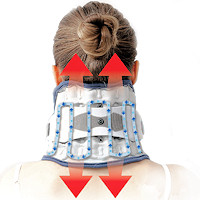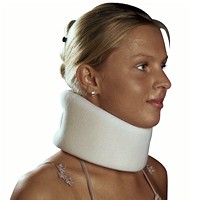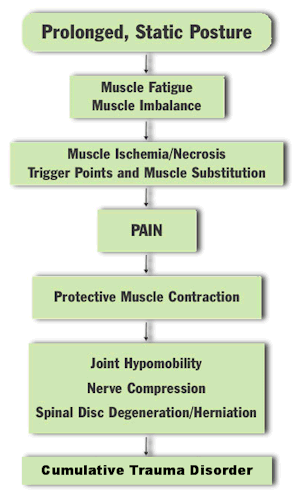Posture And Pain
The body was made for activity, however industrial as well as technical developments did a lot to slow all of us down as more and more individuals perform non moving work activities affecting posture. With the development of computer systems, the quantity of non-active work has grown, along with the quantity of musculoskeletal problems. One scientific biomechanical study in 1993 indicated the occurrence of back pain has risen 2,700 percent between 1980 and 1993.
Modifications in how we use our body brought about an extraordinary rise in work associated pain. Basically, we need to be active and proper motion is necessary to good musculoskeletal health. In a study in the American Journal of Epidemiology in 2010, women sitting over six hours a day have about a 40 percent higher death rate, and men a 20 percent higher death rate than those sitting less than 3 hours per day. Bad news for those of us who tend to remain sitting most of the day.
Whenever you are sitting in a fixed position while not reclining on the chair’s back rest, greater than 50 percent of the body’s muscles need to tighten in order to maintain your body still as you are combating gravitational forces. The fixed forces caused by these continuous, fixed positions are far more demanding on our bodies than more dynamic or moving forces.
 Neck Traction Devices Neck Traction Devices |
 Cervical Pillows Cervical Pillows |
 Neck Support Collars Neck Support Collars |
Prolonged, static postures, whether standing or sitting, result in microtrauma including chronic muscular imbalance, a decrease in blood flow to the muscles, irritated and sensitive areas within the muscles, sometimes called trigger points, and degenerative changes in the discs. This microtrauma progresses over time, leading to pain or a cumulative trauma disorder from repetitive motion.
 Prolonged, static posture leads to muscle fatigue or muscle imbalance. This leads to substitution of normal muscles and problems within the muscles, such as trigger points and muscle ischemia or necrosis. This leads to pain and protective muscle contractions or spasms. The result is hypomobility of joints, nerve compression, disc herniation and disc degeneration.
Prolonged, static posture leads to muscle fatigue or muscle imbalance. This leads to substitution of normal muscles and problems within the muscles, such as trigger points and muscle ischemia or necrosis. This leads to pain and protective muscle contractions or spasms. The result is hypomobility of joints, nerve compression, disc herniation and disc degeneration.
Despite having the most effective ergonomic office equipment, we regularly see us somewhat angling, typically more one way compared to the other. In the event that you are right handed, you might tend to incline forwards and also to the right whenever you abandon a neutral good posture. Eventually, the muscle groups may become short on one particular side of the spinal column or around joints. This kind of asymmetry could lead to irregular forces creating imbalance of the important joints together with lack of flexibility one way more than the other. Eventually, the body’s muscle groups may conform to this unnatural positions brought on by these types of muscular imbalances and also are inclined to sustain this out of balance posture not just at the job, but at home and at leisure too.
Sustaining fixed positions involves continual muscular contraction. Whenever a muscle contracts for extended periods, muscle tension increases. This tension squeezes the our blood vessels inside the muscle, contractions, which can impede blood circulation inside the muscle tissue. A chemical, lactic acid, will build up causing muscle pain and weakness. Actually using the very best posture, the body does stationary muscular work. Active muscular work, however, produces a more healthy setting for body repair. The pump-like contracting and relaxing with muscles assures sufficient blood circulation plus oxygen to the muscle tissues, along with lactic acid elimination.
Time to recover low-level muscular exhaustion following work all day is actually extremely sluggish and there’s a threat that muscular tissues may possibly not recuperate through the subsequent day. Muscles are not meant to have constant, long lasting contractions. They need rest intervals to recuperate from low level amounts of force. In the event the tissue damage is higher than the restoration because of inadequate rest intervals, muscle tissue injury or even cellular death (necrosis) can happen.
Trigger points are a band of muscle fibers which are in a continual condition of contraction. They will feel just like a hard area, often the size of a pea. Whenever pressed on, they are often very painful and may relate pain to some remote area of the body. They will not permit the muscle to be able to contract or relax appropriately and reduce mobility as well as flexibility. Trigger points can be active (very painful) or maybe latent (creating tightness as well as limiting range of motion). Since they’re brought on through muscle ischemia (insufficient oxygen), posture changes as well as emotional tension, trigger points are very frequent.
When you reach adulthood, there’s no blood circulation into the spinal discs, as well as means of nutrition is by a process called imbibition. Consider the disc like a sponge. While resting, it does not soak up any water; but, when squeezed and then let go, it imbibes or soaks up water. That is comparable to the process involving the discs. It takes alternate compressing and relaxing to keep the discs healthy and balanced. Maintained contractions within the muscle tissue during active sitting additionally reduces nutrition of the disc through compressing, raising intradiscal pressure. In the back, disc stresses are typically greater when sitting compared to standing. In comparison to standing, lower back disc stresses raise by 40 percent whenever you sit down “actively” (with no reclining on the back rest), and by 200 percent whenever seated plus bending forward 40 degrees.
 Motion is essential in order to decrease the damage coming from extended, fixed posture. You may integrate the active seat cushion to help with motion techniques in order to enable you to transfer the amount of stress form a set of muscle groups to different ones, improve blood circulation, as well as minimize static pressures on the discs.
Motion is essential in order to decrease the damage coming from extended, fixed posture. You may integrate the active seat cushion to help with motion techniques in order to enable you to transfer the amount of stress form a set of muscle groups to different ones, improve blood circulation, as well as minimize static pressures on the discs.
It is important to try and keep and maintain proper sitting, not only while ergonomics, but at leisure time. This is important for the back and neck.
 Posture Braces Posture Braces |
 Supports & Cushions Supports & Cushions |
 Ergonomic Aids Ergonomic Aids |
Taking a small break and stretching can help. You can find sources for a back stretch and neck stretch while sitting. The benefits of stretching are numerous and include: increasing blood flow to muscles; increasing production of joint synovial fluid; reducing the formation of trigger points; maintaining normal joint range of motion; and increasing nutrient supply to spinal discs. It is advisable to keep in mind some general advice for stretching:
- Assume the beginning position for the particular stretch
- Inhale deeply as well as exhale while you slowly and gradually raise the length of the stretch to a level involving very mild levels of tension
- Maintain the particular stretch for Two to four inhaling and exhaling cycles (10-20 seconds)
- Slowly release the particular stretch and return to neutral posture. Do it again if time permits.
- Try the particular stretch using each side, and see which is tightest. Do the stretch predominantly towards the most tight side during the day, and put stretching diagrams where you could easily see them.
- Don’t stretch inside a hurtful range. In the event that stretching raises pain, cease immediately.
Stretches can be performed every 45 to 60 minutes throughout the day, taking advantage of 10 to 20 second microbreaks throughout the workday.
Implement movement prevention strategies to ensure a high quality of life, prevent disabling injuries and extend your career.
